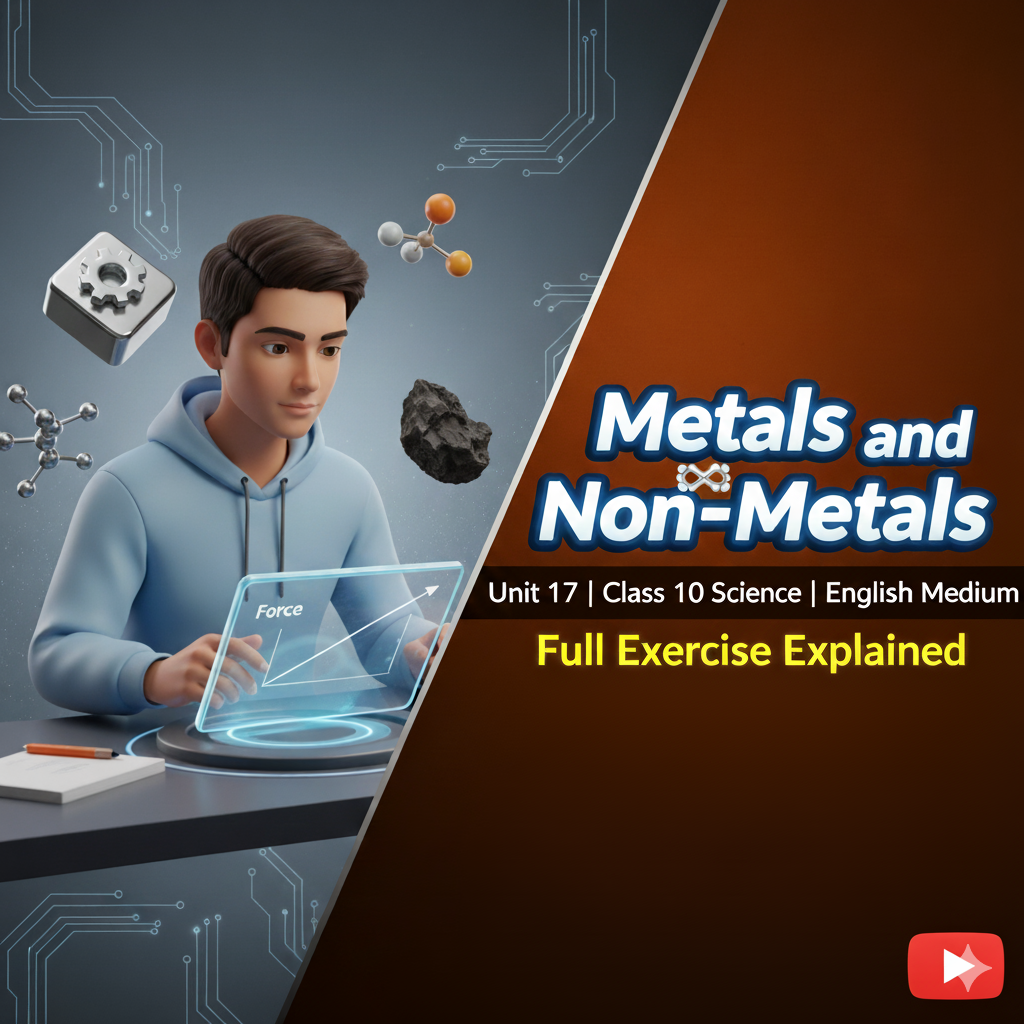Master Class 10 Science Unit 17: Metals and Non-Metals – Complete Exercise Guide
Welcome to our comprehensive guide for Class 10 Science Unit 17 focusing on Metals and Non-Metals. This essential chapter explores the fundamental properties, behaviors, and applications of these crucial elements. In this detailed post, we’ll walk you through the complete exercise solutions, provide key insights, and help you master this important topic for your upcoming exams.
Understanding Class 10 Science Unit 17: Metals and Non-Metals
In Class 10 Science Unit 17, students explore the fascinating world of metals and non-metals, learning about their physical and chemical properties, reactivity series, and practical applications. This unit forms a crucial foundation for understanding chemistry concepts that you’ll encounter in higher classes.
Key Concepts in Class 10 Science Unit 17
The Class 10 Science Unit 17 curriculum covers several important topics that every student should master:
- Physical properties of metals and non-metals
- Chemical properties and reactions
- Reactivity series and its applications
- Extraction of metals from ores
- Corrosion and its prevention
Physical Properties Covered in Class 10 Science Unit 17
When studying Class 10 Science Unit 17, you’ll learn that metals typically exhibit properties like malleability, ductility, conductivity, and luster. Non-metals, on the other hand, are generally brittle, poor conductors, and lack metallic luster. Understanding these distinctions is crucial for solving problems in your exercises.
Chemical Reactions in Class 10 Science Unit 17
The chemical behavior of elements forms a significant portion of Class 10 Science Unit 17. You’ll study how metals react with oxygen, water, acids, and other metal salts. These reactions follow specific patterns based on the reactivity series, which is a key concept in this unit.
Important Note for Class 10 Science Unit 17
Memorizing the reactivity series is essential for success in Class 10 Science Unit 17. The series helps predict displacement reactions and understand why certain metals are extracted using specific methods. Make sure to practice writing the series until you can recall it effortlessly.
Practical Applications from Class 10 Science Unit 17
The concepts in Class 10 Science Unit 17 have real-world applications that you encounter daily. From understanding why iron rusts to knowing why copper is used in electrical wiring, this knowledge connects classroom learning to everyday phenomena.
Exercise Solutions for Class 10 Science Unit 17
The exercise section of Class 10 Science Unit 17 contains various types of questions designed to test your understanding of the concepts. These include multiple-choice questions, short answer questions, and long answer questions that require detailed explanations.
Additional Resources for Class 10 Science Unit 17
To further enhance your understanding of Class 10 Science Unit 17, consider exploring these external resources:
- Official CDC Nepal Website – For official curriculum details
- CDC Digital Library – Access additional reference materials
- Social Guide – Alternative explanations and solutions
- YouTube Video Tutorial – Visual explanations of key concepts
Exam Preparation Tips for Class 10 Science Unit 17
When preparing for exams, focus particularly on the reactivity series, extraction processes, and corrosion from Class 10 Science Unit 17. These topics frequently appear in board examinations and carry significant marks.
Pro Tip for Class 10 Science Unit 17
Create flashcards for the different properties of metals and non-metals covered in Class 10 Science Unit 17. This visual learning technique can significantly improve your recall during exams.
Common Mistakes in Class 10 Science Unit 17
Students often confuse the properties of metalloids when studying Class 10 Science Unit 17. Remember that metalloids exhibit properties of both metals and non-metals, and their classification depends on specific conditions.
Connecting Class 10 Science Unit 17 to Other Topics
The concepts in Class 10 Science Unit 17 connect to several other topics in your science curriculum, including chemical reactions, periodic classification, and environmental chemistry. Understanding these connections will give you a more holistic view of the subject.
Conclusion: Mastering Class 10 Science Unit 17
Class 10 Science Unit 17 on Metals and Non-Metals is a fundamental chapter that builds essential chemistry knowledge. By thoroughly understanding the properties, reactions, and applications covered in this unit, you’ll be well-prepared for your examinations and future science studies. Use the exercise solutions provided above to test your understanding, and don’t hesitate to revisit challenging concepts until you feel confident.
For more educational resources and study materials, explore our other posts on Class 10 Science topics. Remember to practice regularly and approach each concept systematically to achieve the best results in your academic journey.

